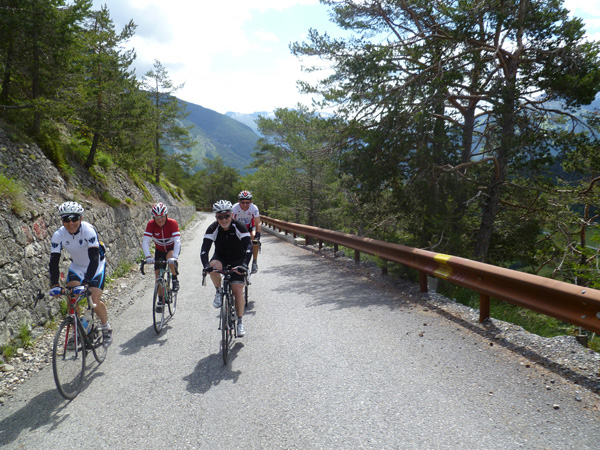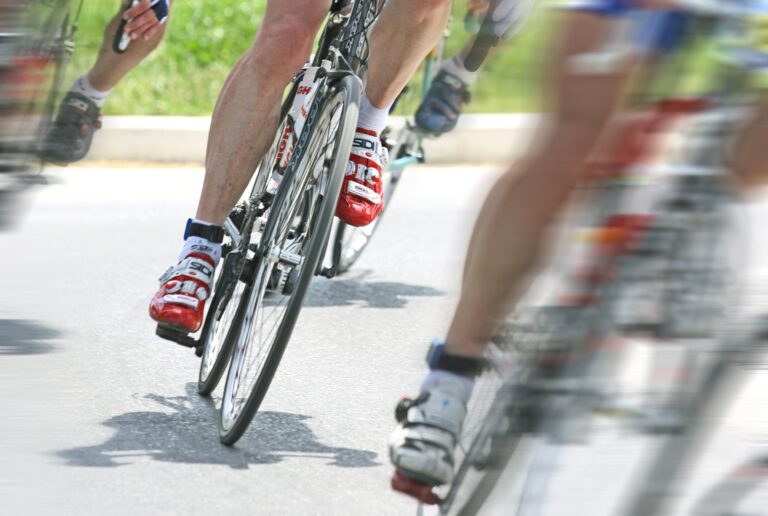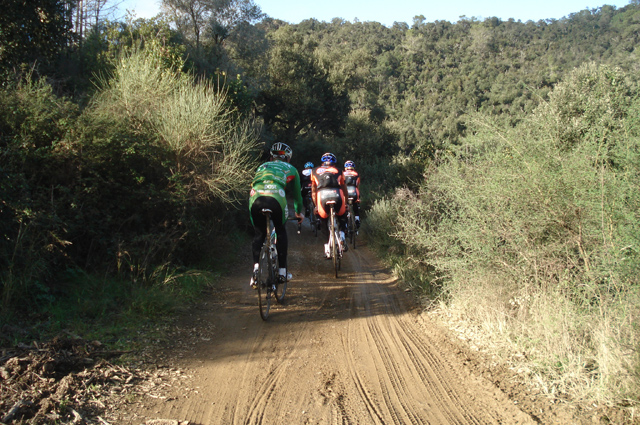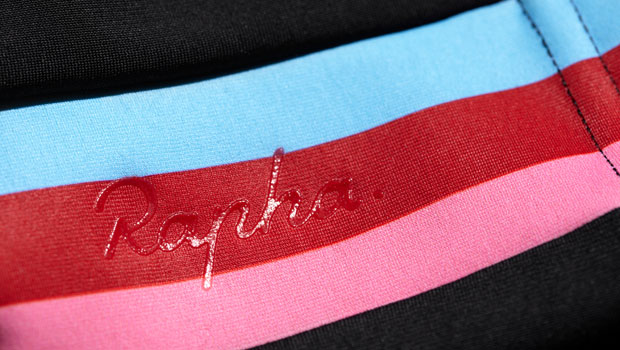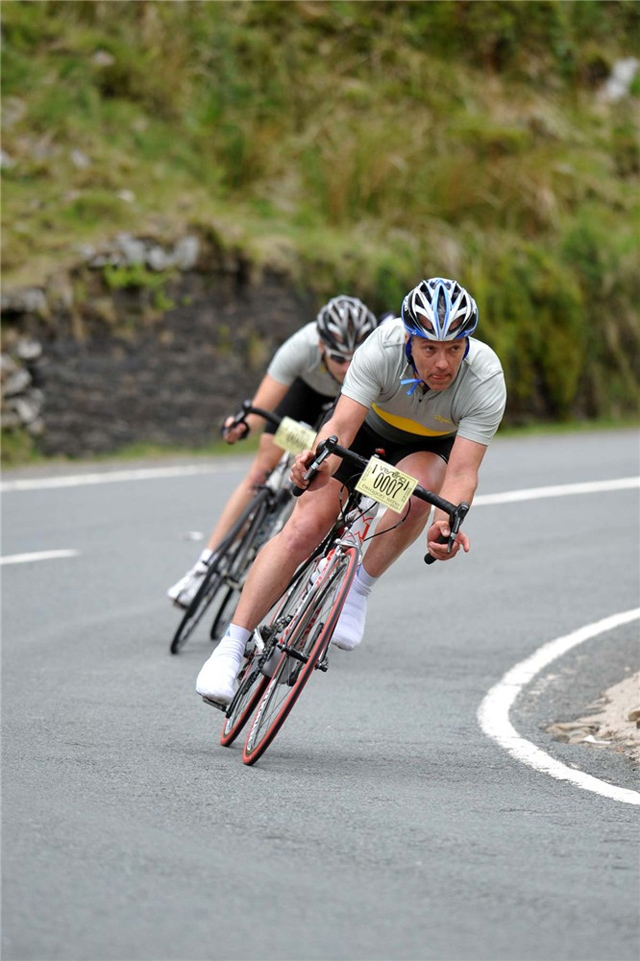
- Pic: La Fuga travel
As well as getting yourself physically and technically competent enough to complete your first century sportive, you need an event strategy to ensure you perform to your best on the day. Here’s how to plan one.
Event strategies are long, medium and short term plans you can put into place in the weeks, days and hours leading up to your event. The common mistake a lot of riders make is to do the training but only start thinking about the logistics of the event itself when they’re on their way to the course. Below I’ve highlighted some of the things you can put in place from several weeks before the big day that will help you perform to your capabilities in the event itself.
Weeks before
This is the training plan you’ve been following in our 12-week programme. You’ve been building up to event distance by increasing training time and the duration of your longest ride, but also introducing intervals of shorter, higher intensity work which will help you cope with the hills and the possibility of riding with groups at a slightly higher pace. You’ve also worked on techniques to improve your group riding skills and particularly your ability to descend smoothly and safely. In this period you should also have identified what kind of kit you need to wear, how to set up your bike properly for the event and what tools you need to carry to cover basic repairs like punctures. Finally, you should have identified your nutritional requirements for rides up to your event distance.
Days before
This is the period when you put together all the equipment and kit you need for the event and check your bike set-up. This might include a basic service but certainly doesn’t include any major changes in any key areas. This is NOT the time to fit those new narrow bars you’ve been looking at or fit a new saddle. Don’t make any changes that might mean a difference in your riding position as compared to your training rides. The temptation is often to go for upgrades or lighter weight kit like shoes and pedals but this would mean re-setting your cleats and wearing things you’re not familiar with. These kinds of changes should be made weeks, not days before the event. Don’t take the risk that something might not be quite right on the day. Even the most trivial annoyance, when endured over the course of 100 miles in the hills, can turn into a major problem, so eliminate all such risks.
24 hours before
The day before the event is the time to study the course map in a little more detail. Pay particular attention to the course profile and where the major climbs and feed stations are. The more knowledge you have, the less likely you are to have any nasty surprises on the day and you can plan a pacing and nutrition plan accordingly. If you’re using a computer, memorise at what miles or kilometers distance the feed stations are situated so you always know where you are in relation to them and can plan your stops accordingly. I’ve seen exhausted riders take lengthy stops to buy food and drinks from garages and shops only to discover an event feed station a few hundred yards away round the next bend. Knowing where the feed stations are, and what they are stocked with, can also significantly affect when you eat and how much you have to carry – so check this information on the organiser’s website in advance.
On the subject of food and drink, the day before is when you want to make sure you get enough fuel in as a base for your ride the following day. So eat and drink plenty but don’t stuff yourself to the point of discomfort. You should have a good idea of what you need to eat and drink the day before from preparing for your long training rides so stick to what you’ve learned.
Prepare to pace yourself
Use the course profile to get an idea of how hard you’ll be riding in the early and latter stages of the ride so you can pace yourself accordingly. Does the route feature major climbs close to the finish requiring you to hold something in reserve? Some events finish with an extended descent of several miles, which means the physical challenge is effectively over long before the finish. Again this can dictate how you approach what happens previously on the ride.
Apart form the course itself, familiarise yourself with the starting procedure and layout of the start area, where you need to be and at what times. Big events like the Dragon Ride draw so many riders these days that it can take hours to get into the car park, get your bike and kit prepared and line up for the start. Consequently, the more preparation you have done to your bike and kit in advance, the less stressed and time-crunched you will be on the day. Are you required to fit a transponder or number to your bike? Do you have to sign on in advance or has this been taken care of prior to the event? All events are different and have different requirements so make sure you know what’s going on.
And most importantly, check the weather forecast. This will greatly influence what you wear and what you carry. It’s not always 100% correct but it will give you a good starting point as to what the conditions might be like. Good riders will get to bed early the night before a big event but set an hour aside to check all these things before lights out, it can make a big difference to how your ride goes the following day.
Hours before
What you do in the hours leading up to the ride itself depends how well your preparation has gone in the days preceding it. At this stage, with luck you won’t be worrying about things like how much pressure is in your tyres or whether you packed enough tubes in your saddle-pack because you took care of all these things before you arrived. All you should be doing now is enjoying the atmosphere and thinking about the ride to come. Don’t spend hours walking around the various car parks and coffee stalls in your cleats as your legs won’t thank you for it come the start of the ride. And don’t make the mistake of downing several bottles of fluid before the off or you’ll be looking at a very early and unnecessary comfort break. If you’ve prepared well the day before you should only need to sip small amounts of fluid to stay hydrated when waiting for the start and then begin drinking little and often as soon as you’re underway.
And that’s it, you should now be feel safe in the knowledge that you’ve done all you can to prepare for the moment and be able to enjoy it… so have a good ride.
Part 1: Going for Centuries
Part 2: Breaking down the barriers
Part 3: Goal setting
Part 4: Intensity
Part 5: Get in the Zone
Part 6: Performance Testing
Part 7: Creating a training plan
Part 8: Weekly training plans
Part 9: Be a better climber
Part 10: Improve your pedalling
Part 11: Become a better descender
Part 12: More descending skills
Part 13: Upping the pace
Part 14: Pacing and staying in a fast group
Part 15: Playing to your strengths
Part 16: Final preparations
About the author:
Huw Williams is a British Cycling Level 3 road and time trial coach. He has raced on and off road all over the world and completed all the major European sportives. He has written training and fitness articles for a wide number of UK and international cycling publications and websites and as head of La Fuga Performance, coaches a number of riders from enthusiastic novices to national standard racers.
Contact: [email protected]

